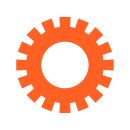A good design system can be big for UX, engineering, product and other teams, but it doesn’t magically appear overnight.
“Everyone always says time is the biggest challenge when building a design system, and that’s true,” Meredith Schulz, Senior Conversation Design Manager at LivePerson, said.
When Schulz and her team decided to build a design library, they had a lot of work cut out for them between stakeholder meetings, determining the system’s audience and choosing the right tools to build it — all while juggling normal job requirements and projects at the enterprise conversational AI platform.
Since time is always at a premium, Schulz said her team had to be deliberate about what they were trying to achieve with their design system so no one’s time or efforts were wasted.
So they asked themselves questions, one of the biggest pieces of advice she has for other companies that are building a design system.
“At the beginning stages of building a design system, have an early and honest talk with your design team,” Schulz said. “Apply UX research methodology to your system like anything else you’d design and ask, ‘What is the job to be done?’”
Schulz said they wanted brand new designers to use the system, so Schulz and her team asked how it should look from a design perspective. They asked if other teams would benefit from the system and when the answer was “yes,” they built portions of it with customer-facing teams in mind.
Asking key questions at the beginning of the process aligned stakeholders and unlocked insights that allowed LivePerson’s team to build a scalable design system without wasting any time.
In the initial planning phase, what were your key requirements for the design system and how did you determine how you would build it?
Our newly-formed design team discussed who our stakeholders would be, and we quickly realized that this theme of growth reached beyond the design org — it should help our account, sales and product teams, too.
To support all these stakeholders, we needed a living design system that was easy to update. Our designers are constantly optimizing and iterating bot experiences for our clients. I wanted to make sure their learnings were captured so other designers across different accounts could put them to good use, especially if they’re building a new bot from scratch or are new to the job. In addition to creating something that can evolve with our design team and department as we grow, we wanted the design system to showcase a future-focused POV.
We needed a living design system that was easy to update.”
What was the biggest challenge your team faced while building and implementing a design system?
Time is one of the challenging aspects when building a system. It’s an extra project you have to prioritize in addition to your regular design work. So we had to be honest about what would work for us so we didn’t create looked and felt like a design system, but wasn’t helpful.
Initially, I thought I needed to create a visionary design philosophy from the top down. But I couldn’t imagine how our team would immediately benefit, especially thinking about the “day one designer” use case and non-designer stakeholders. Instead, we asked, “What does success look like after version one of this design system is built?”
What processes have been especially useful for keeping your design system up to date and bug-free?
We knew our design system needed to be lightweight and not require many hoops to publish updates since it would be evolving. We decided to use Notion and Lucidchart as our main tools to create a conversational design pattern library and system. Notion is easy to get up and running and has some neat database features like tagging and sorting and came in handy for our pattern categories.
We used Notion to build “level one” of the system, which can be used by designer and non-designer stakeholders. It shows the overall value of design and helps anyone “shop” available patterns from our best catalog of design work. “Level two” is only for designers and exists within Lucidchart, our primary tool for documenting custom designs. This provides a full-picture view of how each bot is set up within LivePerson’s Conversation Builder tool.
Our department can field-test and provide a feedback loop to our product team. Therefore, the design system patterns a conversational designer creates today could become the next feature deployed within LivePerson’s product. This feedback loop process takes time and patience to put into practice, but it’s worth it.








.jpeg)
.jpeg)